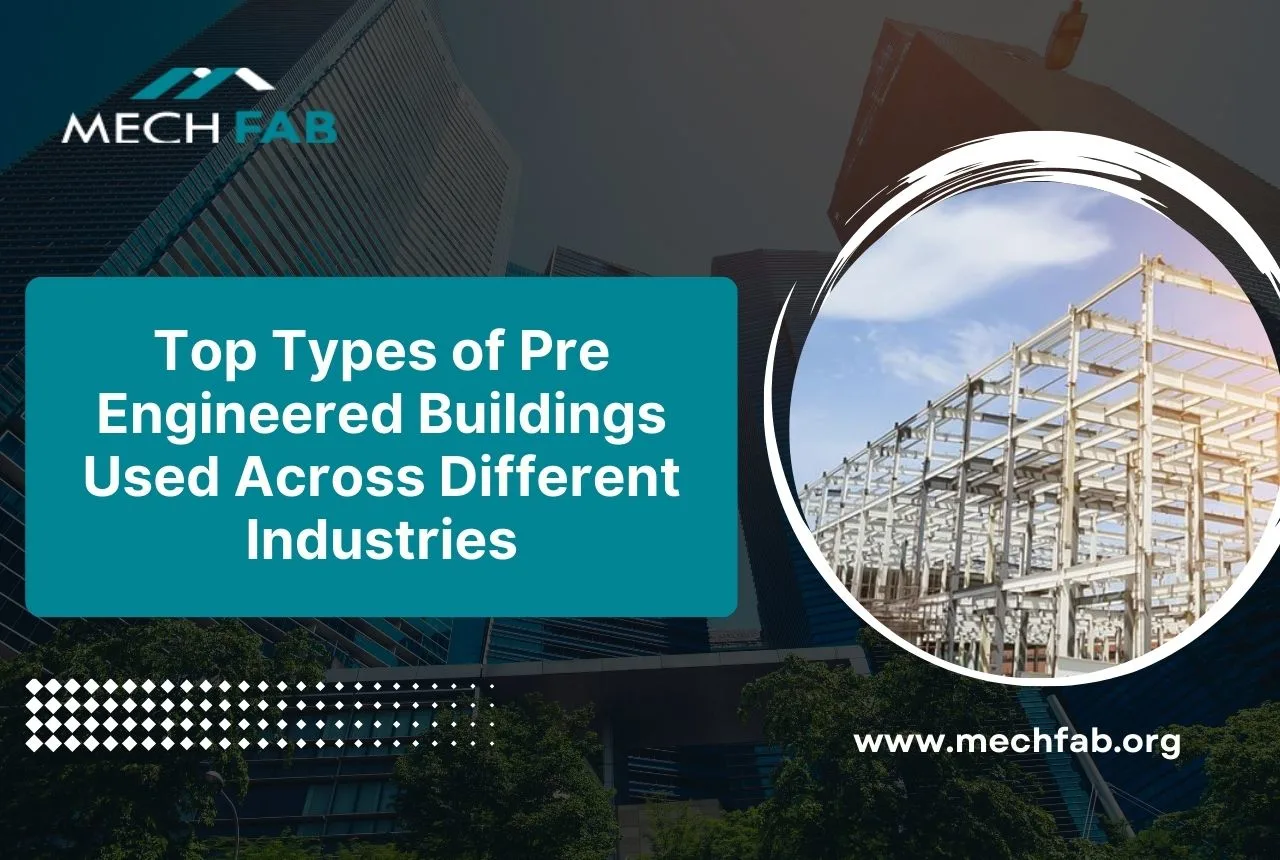Future trends in PEB have revolutionized the construction landscape. These prefabricated structures offer rapid construction, cost-efficiency, and flexibility, making them ideal for a wide range of applications, from industrial warehouses to commercial spaces. The increasing demand for efficient and sustainable building solutions has propelled the PEB industry into a phase of rapid growth and innovation.
The construction industry is on the cusp of a transformative era, driven by groundbreaking advancements that promise to redefine the way we build. In the realm of PEBs, these innovations are poised to reshape the industry, offering unprecedented levels of efficiency, sustainability, and design flexibility. This blog delves into five such innovations that are set to revolutionize the PEB landscape.
From the integration of cutting-edge technologies to the development of sustainable materials and construction methods, the future of PEBs is brimming with potential. Let’s explore these groundbreaking trends in detail and understand how they will shape the industry in the years to come.
Future Trends in PEB: 5 Groundbreaking Innovations Shaping the Industry
1. Sustainable Materials and Construction Practices

The building sector now gives sustainability first priority, and the PEB sector is not an exception. Demand for environmentally sustainable building solutions is skyrocketing as the globe struggles with resource depletion and climate change. PEB makers are using sustainable materials and building techniques more and more in order to fulfil this objective.
One important first step towards lessening the industry’s carbon footprint is using recycled steel in PEB frames. This material provides almost equal strength and durability to virgin steel in addition to resource preservation. Low-carbon concrete’s use into PEB slabs and foundations also helps reduce greenhouse gas emissions. Advanced insulating materials included in PEBs are lowering heat transmission and hence energy consumption for heating and cooling, thereby improving energy efficiency.
LEED (Leadership in Energy and Environmental Design) certifications are becoming increasingly important for PEB projects as sustainability gets traction. These certifications support a building’s whole value proposition and confirm its environmental performance. The PEB sector is not only reducing its environmental effect but also producing better and more robust buildings by giving sustainable materials and construction techniques top priority.
2. Integration of Smart Technologies and IoT (Internet of Things)

The junction of smart technology and PEBs is bringing in a new era of intelligent and effective buildings. IoT sensors and gadgets help PEBs to become “smart” buildings able to maximise performance, improve occupant comfort, and enable predictive maintenance by means of optimisation of performance.
IoT sensors positioned deliberately all over a PEB may track several factors including temperature, humidity, occupancy levels, and energy use. This real-time data offers priceless analysis of occupant behaviour and building performance.
By means of data pattern analysis, building managers can make informed decisions to maximise HVAC systems, lighting, and ventilation, therefore optimising ventilation, energy saving outcomes.
Furthermore allowed by IoT-connected predictive maintenance features is proactive identification of possible problems before they become expensive breakdowns. Sensors can, for example, track infrastructure and equipment condition, therefore inform repair workers to approaching breakdowns. By this proactive method, building components’ lifetime is extended and downtime is reduced. Through features like controlled HVAC systems that change depending on personal preferences and occupancy patterns, smart PEBs can also provide improved occupant comfort.
3. Advanced Design and Manufacturing with BIM (Building Information Modeling):
For physical education buildings, building information modelling (BIM) is transforming the design and construction process. This digital strategy generates and controls data for a created asset all through its lifetime.
By allowing engineers and architects to create complex 3D models of PEB buildings, BIM tools help to simulate many design possibilities and maximise layouts.
Among the main benefits of BIM is its capacity to improve cooperation among project participants. Working on a common digital platform, architects, structural engineers, MEP ( Mechanical, Electrical, and Plumbing) engineers, and fabricators can collaborate effortlessly, so enhancing communication and lowering errors. Early in the design process, BIM also helps to uncover possible conflicts between several building components, therefore reducing expensive rework on-site.
BIM simplifies the building’s construction by offering a complete digital replica of it. Faster building times and lower costs follow from the optimisation of material sourcing, manufacturing, and assembly using exact and comprehensive information produced from the model.
4. Rise of Modular Construction and Prefabrication

Using a regulated manufacturing environment, modular construction entails constructing components or whole building sections and then transporting them to the construction site for assembly.
This method’s many benefits are helping the PEB sector to adopt it rather quickly.
Made precisely in factories, PEB components—including wall panels, roof trusses, and columns—ensure better quality control than conventional on-site building. After that, these prefabricated parts are delivered to the project location and quickly assembled, therefore drastically cutting building time.
By besting material use in a manufacturing environment, modular building also reduces waste. Furthermore, as modular parts may be added or rearranged rather easily, it provides more freedom for future growth or reconfiguration. Modular building is destined to take front stage in the PEB market as the building sector keeps giving speed, efficiency, and quality top priority.
5. Augmented Reality (AR) and Virtual Reality (VR) for Design, Construction, and Maintenance:
Offering creative answers for design, construction, and maintenance, augmented reality (AR) and virtual reality (VR) technologies are poised to transform the PEB sector.
AR could change how on-site AR views and communicates PEB designs. AR can enable stakeholders see how a PEB will look in its final form before building ever starts by overlaying digital data onto the actual environment. Through real-time access to project data and information, this technology can also help building teams coordinate and communicate better.
Conversely, VR provides immersive experiences that one can use for simulation and training. By means of a safe and controlled virtual environment, construction workers can be taught on intricate PEB assembly techniques, therefore lowering on-site accidents and increasing efficiency. VR can also be used to replicate building maintenance activities, therefore allowing technicians to practise troubleshooting and repair jobs before facing actual difficulties. Integration of AR and VR technologies into the PEB sector is predicted to propel notable increases in productivity, quality, and safety as they keep developing.
Benefits of Embracing Future Trends in PEB

The integration of sustainable materials, smart technologies, advanced design tools, modular construction, and immersive technologies into the PEB industry promises a multitude of benefits. By adopting these innovations, PEB manufacturers and builders can significantly enhance the sustainability, efficiency, cost-effectiveness, safety, and occupant well-being of their projects.
Sustainable materials and construction practices reduce the environmental impact of PEBs, while smart technologies optimize building performance and energy consumption. Advanced design tools like BIM streamline the design and construction process, leading to improved accuracy and cost savings. Modular construction accelerates project timelines and reduces waste, while AR and VR enhance visualization, training, and maintenance.
However, the adoption of these innovations may present challenges. Initial investments in new technologies and equipment can be substantial, and there may be a need for additional training to develop the necessary skills. Overcoming these hurdles requires a strategic approach and a long-term perspective on the benefits these innovations can bring to the PEB industry.
By embracing these future trends, the PEB industry can position itself at the forefront of sustainable and innovative construction, delivering high-quality, efficient, and environmentally responsible buildings.
Conclusion
Driven by creative ideas that could completely change the building scene, the PEB sector is about to enter a transforming period. From smart technologies and sustainable materials to sophisticated design techniques and modular construction, PEBs’ future is bursting with fascinating opportunities.
These developments together place PEBs as a very flexible and sustainable answer for a variety of building purposes. Incorporating these trends will help you greatly increase efficiency, cost-effectiveness, and environmental performance whether your project is industrial, commercial, or warehouse building.
Keeping current with the most recent advancements in PEB technology is essential as the building sector changes. Understanding and appreciating these advancements will help you to fully utilise pre-engineered buildings and produce environmentally friendly, future-proof constructions instead of simply functional ones.






